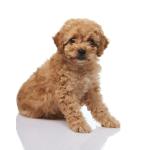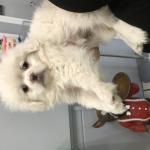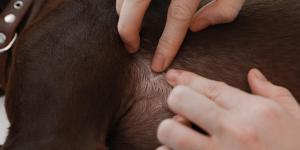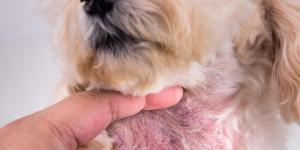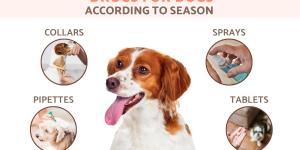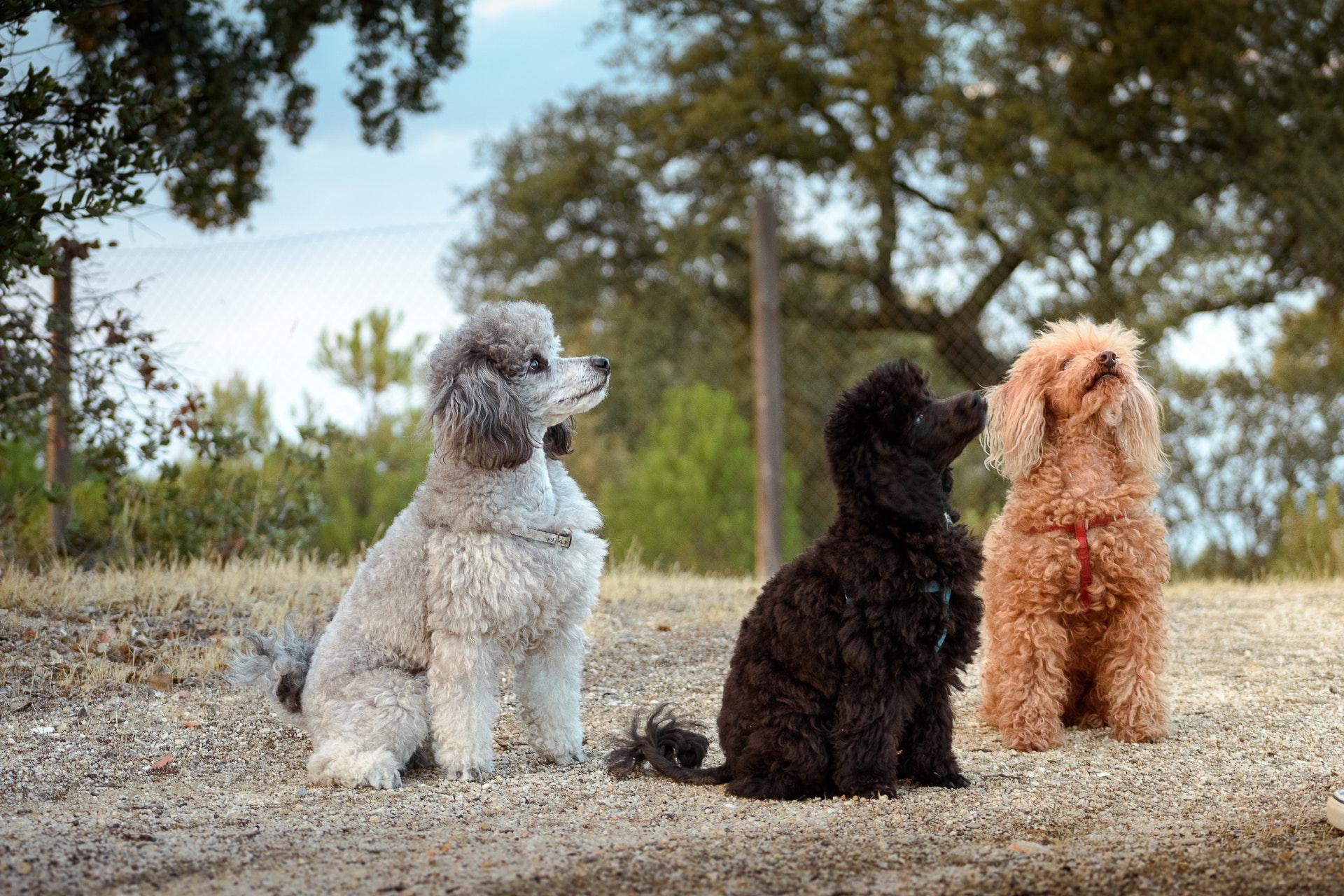Toy Poodle
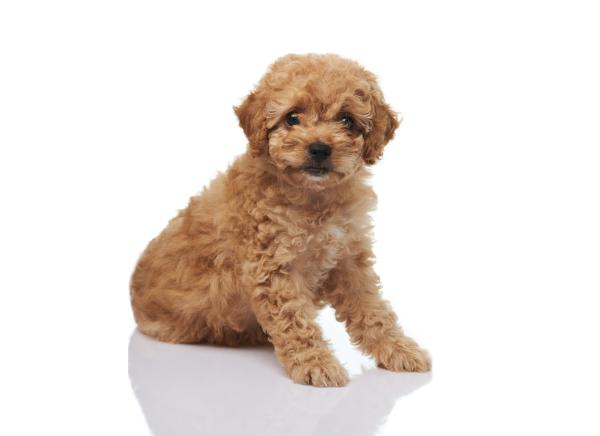
The Toy Poodle is one of the most popular, appreciated and loved types of poodle in the world. The FCI recognizes 4 types of poodles according to their size and in this breed file we will talk about the smallest of them, considered the "miniature" poodle.
These little ones have become the most widespread companion dogs in recent years. In this AnimalWised breed sheet we will explain everything you need to know about this dog breed.
- Europe
- France
- Group IX
- 5-14
- 14-18
- 18-22
- 22-27
- 27-31
- More than 31
- 2-7
- 7-22
- 22-55
- 55-100
- 100-220
- 8-10
- 10-12
- 12-14
- 15-20
- Low
- Meidum
- High
Origin
The poodle is a direct descendant from the Barbet, a French water dog. In their origins they shared many characteristics. Poodles were retrievers, used by hunters. They were excellent as their coat was moisture-resistant and helped them swim.
In France the dog was also named “chien canard” or “caniche” demonstrating their duck-hunting abilities. They were also used as a guide dog, guard dog, military dog, circus performer and even as a wagon puller for entertainer.
Thanks to their sociable, extremely faithful and positive character, poodles ceased to be hunting dogs to become domestic animals. In the 15th-century, the poodle was considered the national dog breed of France. From then on the breeders strove to achieve a uniform colored mantle in this breed, avoiding spots and other unwanted patterns.
They were so famous that in 1922, the Poodle Cluv was founded in Paris. In 1936, the FCI established the official breed standard. However it was not until 1984 that the toy-sized poodle was recognized by the FCI.
Physical Appearance
Toy poodles are small dogs, whose height should not exceed 11 inches at the withers, and their weight should be around 4.5 to 5.5 lbs. Since they are so small, it's important to pay attention to possible signs of dwarfism.
Their body is symmetrical, with strong and well developed legs, finished in small oval feet. The tail is set high and has traditionally remained intact in the curled-hair poodles. Unfortunately, this was not the case for stringed-hair poodles, whose tail was cut until only one third of the original remained.
The head of a toy poodle is symmetrical, elongated and narrow, with marked cheekbones and expressive dark almond eyes. Their ears are long. When it comes to their fur there are two types of Toy Poodle: curled hair poodles and stringed-hair poodles. The color of the coat can be brown, black, gray, orange, reddish or white, but always monochrome and uniform.
Character
Like other poodles, Toy Poodle are active, obedient and intelligent dogs, which makes it an easy breed to train and educate. In fact, they are considered the smartest dog in the world according to Stanley Coren. Unlike other dog breeds, the poodle requires a few repetitions to understand an order, exercise or situation. These dogs are especially social, therefore, the absence of tutors can cause this dog to manifest unwanted behaviors such as destructiveness, stress or vocalization.
They are ideal for families with children, because thanks to their good character and high energy, they are the ideal companion for little ones in the house. They are also able to socialize very well with other pets and elderly people as long as they are positively introduced as young puppies to a diverse social life. In other words, as long as they are well socialized as puppies.
Care
Due to the characteristics of their fur, the poodle toy must be brushed daily. This way we will avoid the formation of tangles, the accumulation of dirt and excess hair throughout the house. It is also recommended to perform a monthly bath. It's important not to forget the ocular, ears, teeth, eyes, or nail cutting hygiene as part of basic care.
Another important aspect will be their physical and mental stimulation. Toy Poodles are very physically active dogs with an active and curios mind. It's very important for their overall health that we satisfy their needs. They should be taken out for a walk 3 or 4 times a day, in addition it's recommended to involve them in canine sport. Teaching them obedience, dog skills or to perform intelligence games will help them develop their cognitive abilities. Lastly, environmental enrichment is another key factor in their development and well-being.
When it comes to feeding, we want the best nutrition and diet for our dogs. The best way to inform yourself about the needs of your dog is by consulting your local veterinarian.
Education
The Toy Poodle's education should start as soon as possible. The most important stage is when they are puppies and begin to socialize. This period begins when they are merely 3 weeks old and ends when they are 3 months old. Ideally, in this period they will interact with different kinds of individuals (people, cats, or dogs, etc.) and get to know different environments. It's crucial that they have a good experience interacting with different situations so that when they growing up, they don't develop any irrational fears or aggressiveness. In the case of not being able to socialize with their parents or siblings, it would be a good idea to consult a canine educator so they can attend classes for puppies.
It's ideal to train them to pee on newspaper or a designated area and to obey simple orders (that will keep them safe in the future) when they are puppies. They should also begin playing intelligence games to help stimulate their mind. All of their training should be done in with positive reinforcement and in an encouraging way.
Health
Poodles have certain pathologies associated with the genetics of their breed, so most of the ones we are going to mention are of hereditary origin. Some of them affect sight, such as entropion, cataracts, glaucoma or progressive retinal atrophy. They may also have hypothyroidism, which affects thyroid hormones, epilepsy or otitis. To avoid otitis it is recommended to clean their ears following a series of guidelines. They can also develop diseases that affect their skin health such as fungi, allergies or pyoderma. Finally, the possible presence of hip dysplasia, legg-calvé-perthes disease or patellar dislocation can be highlighted in the articular field.
To prevent and/or detect some of the aforementioned health problems, it will be important to go to the veterinarian every 6 or 12 months. Regular supervision by a specialist will help us detect any anomaly promptly. It is also crucial that we strictly follow the vaccination schedule for dogs and the deworming calendar.
Vídeo de Toy Poodle
Toy Poodle photos
